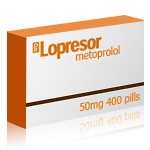Thyrotoxicosis: Diagnosis, Symptoms, and Management


Thyrotoxicosis is a medical condition characterized by an excessive concentration of thyroid hormones in the bloodstream. This excess leads to a hypermetabolic state, resulting in a wide range of clinical symptoms and potentially serious health risks if left untreated. Understanding thyrotoxicosis, its differentiation from hyperthyroidism, diagnostic criteria, and the role of medications such as Lopressor in its management is crucial for effective patient care.
Differentiating Thyrotoxicosis and Hyperthyroidism
Thyrotoxicosis and hyperthyroidism are terms often mistakenly used interchangeably, but they are not identical. Hyperthyroidism specifically refers to disorders where the thyroid gland itself produces excess thyroid hormones, as seen in conditions like Graves' disease or toxic multinodular goiter. Thyrotoxicosis, on the other hand, encompasses any state of excess thyroid hormone, regardless of the source. This can include factitious thyrotoxicosis, where thyroid hormones are ingested inappropriately, or thyroiditis, where hormone leakage occurs due to glandular inflammation.
TSH Levels and Laboratory Findings
The diagnosis of thyrotoxicosis involves evaluating thyroid-stimulating hormone (TSH) levels, which are typically suppressed due to negative feedback from high circulating thyroid hormones. TSH levels in thyrotoxicosis are often undetectable or less than 0.01 mIU/L, with elevated free thyroxine (T4) and/or triiodothyronine (T3) levels confirming the diagnosis.
Recognizing Thyrotoxic Crisis
A severe and life-threatening manifestation of thyrotoxicosis is the thyrotoxic crisis, also known as thyroid storm. This acute exacerbation presents with high fever, profound tachycardia, hypertension, agitation, delirium, gastrointestinal symptoms like nausea and vomiting, and potential progression to heart failure. Recognizing the early signs of thyrotoxic crisis is vital, as it requires immediate medical intervention to reduce mortality risk.
Criteria and Clinical Features of Thyrotoxicosis
The clinical criteria for diagnosing thyrotoxicosis rely on both laboratory findings and patient symptoms. Clinicians assess TSH suppression along with elevated T3 and T4 levels. Patients commonly report unexplained weight loss despite normal or increased appetite, excessive sweating, heat intolerance, tremors, nervousness, muscle weakness, and palpitations. Women may also experience menstrual irregularities. Cardiovascular complications such as atrial fibrillation are not uncommon and further reinforce the diagnosis.
Diagnostic Approaches
Diagnosing thyrotoxicosis requires a thorough clinical evaluation, including patient history and physical examination. Laboratory studies form the cornerstone, with measurement of serum TSH, free T4, and total or free T3 levels. Additional investigations such as radioactive iodine uptake tests help differentiate between causes; for instance, high uptake is seen in Graves' disease, while low uptake suggests thyroiditis. Thyroid antibody testing, including TSI (thyroid-stimulating immunoglobulin) and anti-thyroid peroxidase antibodies, assists in diagnosing autoimmune-related thyroid disorders.
Imaging studies, particularly thyroid ultrasonography and scintigraphy, offer structural and functional insights into the thyroid gland. An ultrasound can identify nodules or glandular abnormalities, whereas scintigraphy provides functional assessment by mapping iodine uptake across the gland.
The Role of Lopressor in Treatment
Management of thyrotoxicosis focuses on controlling symptoms and addressing the underlying cause. One critical component of symptomatic management is the use of beta-adrenergic blockers. Lopressor, the brand name for metoprolol, is a selective beta-1 blocker that effectively mitigates the adrenergic symptoms associated with thyrotoxicosis. These include palpitations, tremors, anxiety, and tachycardia. Lopressor does not directly affect thyroid hormone levels but provides rapid symptomatic relief while definitive treatments are initiated.
Metoprolol works by blocking beta-1 adrenergic receptors, primarily in the heart, leading to decreased heart rate and reduced cardiac output. This makes it particularly valuable in patients at risk of cardiovascular complications from excessive thyroid hormones. While non-selective beta-blockers such as propranolol have the added benefit of inhibiting peripheral conversion of T4 to T3, Lopressor is often preferred for its cardioselectivity and reduced side effect profile.
Long-Term Management and Patient Education
The dosage of Lopressor is individualized based on the severity of symptoms and patient tolerance. It is commonly initiated at low doses and adjusted accordingly. Lopressor is generally well-tolerated, though potential side effects include fatigue, dizziness, and bradycardia. Patients with asthma or chronic obstructive pulmonary disease (COPD) should use Lopressor cautiously, although its beta-1 selectivity reduces the risk of bronchospasm compared to non-selective beta-blockers.
In the long-term management of thyrotoxicosis, once the diagnosis and underlying etiology have been confirmed, treatments may include antithyroid medications such as methimazole or propylthiouracil, radioactive iodine therapy, or surgical thyroidectomy. Throughout this period, Lopressor remains a cornerstone for symptomatic control, particularly during the initial phases of treatment when hormone levels are still elevated.
Patient education is an essential component of managing thyrotoxicosis. Individuals must be informed about the importance of medication adherence, potential side effects, and the need for regular follow-up and monitoring of thyroid function tests. Early recognition of worsening symptoms, such as increased heart rate or mental status changes, can prompt timely medical attention and prevent progression to a thyrotoxic crisis.
Emerging Research and Future Directions
Recent advancements in the field of endocrinology have paved the way for promising research aimed at improving the diagnosis and treatment of thyrotoxicosis. Studies are exploring the genetic underpinnings of thyroid dysfunction, offering potential for personalized medicine approaches that tailor treatment plans to individual patient profiles. Molecular imaging techniques are also being refined to provide more precise localization of thyroid abnormalities, which could significantly aid in the early detection and differentiation of thyroid pathologies.
Additionally, researchers are investigating the role of environmental factors, such as iodine intake and exposure to endocrine-disrupting chemicals, in the development of thyrotoxicosis. Understanding these relationships may lead to better preventive strategies and public health policies to mitigate risk factors.
Pharmaceutical advancements are also underway, with novel antithyroid drugs being tested for improved efficacy and reduced side effects. Long-acting beta-blockers and newer classes of thyroid hormone antagonists are in various stages of clinical trials, aiming to enhance symptom control with fewer dosing requirements.
Patient-centered care remains a focal point in modern management strategies. Incorporating digital health technologies, such as wearable devices and telemedicine, has the potential to enhance patient monitoring and adherence to treatment plans. These innovations represent a significant step toward optimizing long-term outcomes for individuals living with thyrotoxicosis.
Conclusion
In conclusion, thyrotoxicosis represents a complex endocrine disorder requiring a multidisciplinary approach for optimal care. Differentiating it from hyperthyroidism is critical for accurate diagnosis and effective treatment planning. TSH suppression, elevated T3 and T4 levels, and clinical presentation guide diagnosis. Recognizing the potentially fatal thyrotoxic crisis underscores the importance of early intervention. Lopressor plays a pivotal role in managing the distressing symptoms of thyrotoxicosis, providing patients with much-needed relief as they undergo definitive treatment. By integrating symptom management with targeted therapies and ongoing patient education, healthcare providers can significantly improve the outcomes and quality of life for individuals affected by this condition. represents a complex endocrine disorder requiring a multidisciplinary approach for optimal care. Differentiating it from hyperthyroidism is critical for accurate diagnosis and effective treatment planning. TSH suppression, elevated T3 and T4 levels, and clinical presentation guide diagnosis. Recognizing the potentially fatal thyrotoxic crisis underscores the importance of early intervention. Lopressor plays a pivotal role in managing the distressing symptoms of thyrotoxicosis, providing patients with much-needed relief as they undergo definitive treatment. By integrating symptom management with targeted therapies and ongoing patient education, healthcare providers can significantly improve the outcomes and quality of life for individuals affected by this condition.
Medically Reviewed by Dr. Rabeea Aboufakher, MD
(Updated at May 15 / 2025)

